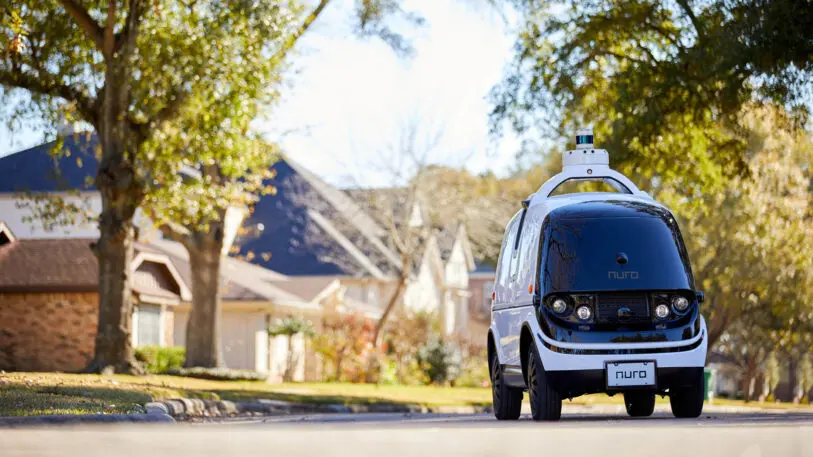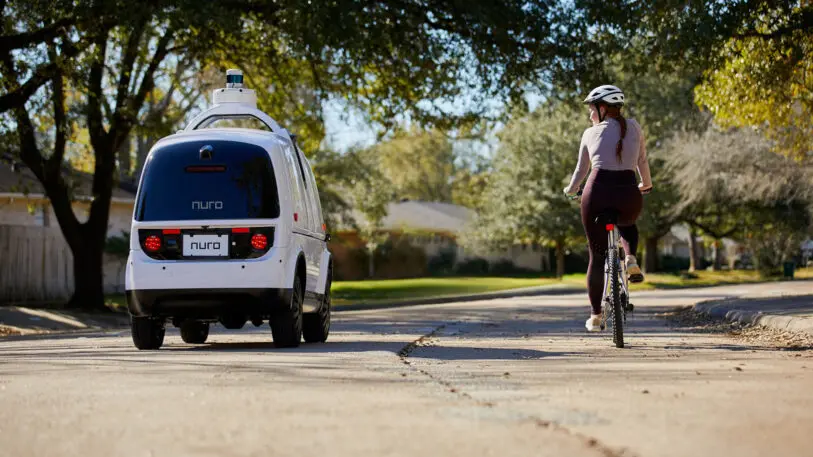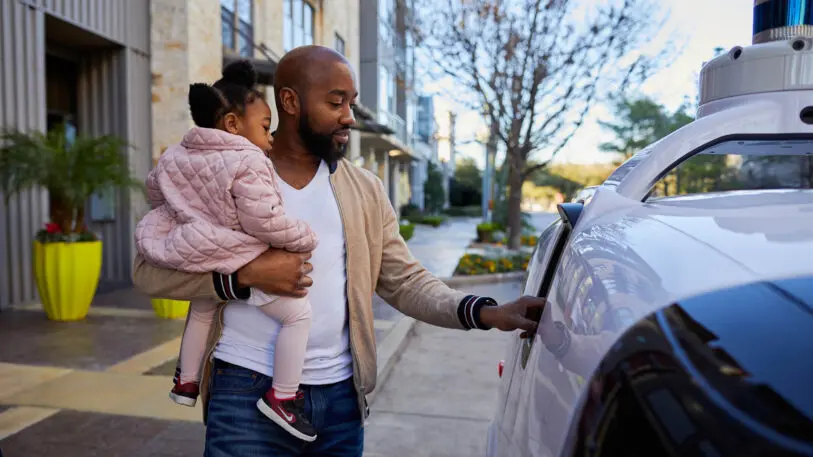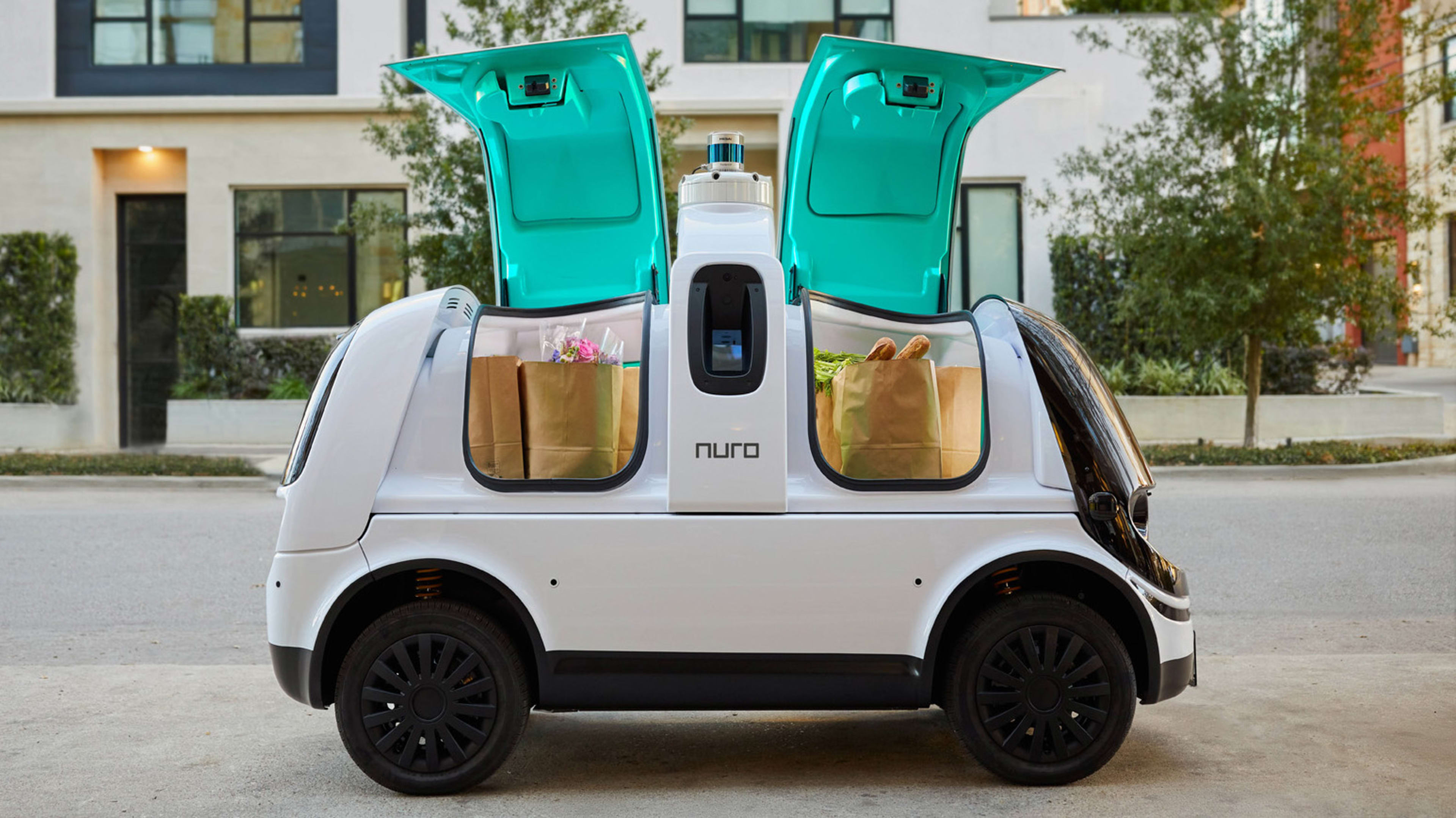Nuro is the autonomous vehicle company that big brands love. With a focus on delivery, Nuro’s cute, driverless vehicle that’s optimized to hold goods has attracted partnerships with Walmart, Kroger, and CVS, along with over $1 billion in funding since 2017.
This week, Chipotle joined the list of Nuro’s backers, investing an undisclosed amount in the company’s latest round of funding.
Nuro has been a golden child of the startup world since 2017. Like many other AV startups, it’s been testing its technologies tentatively over several years to polish them for wider release. The strategy seems to be paying off for Nuro. Its Nuro R2 vehicle has become the first autonomous car approved to operate without a driver on roads across three different states (California, Arizona, and Texas).
But why did a burrito company invest in a robotic delivery company? The short, obvious answer is to deliver burritos. But if you talk to Curt Garner, chief technology officer at Chipotle, about the investment, it’s clear that there’s a longer, more nuanced answer.
Chipotle doesn’t just want to be first in line in the world of autonomous delivery. It wants to shape what that experience will look like from the ground up—an experience that is likely to be different than most of us probably imagined.

Myth 1: The big opportunity is in eliminating drivers
Chipotle: The big opportunity is redesigning vehicles.
Chipotle already partners with Uber Eats, Postmates, and Door Dash to deliver meals. So the natural opportunity in investing in Nuro seems obvious: It’s an opportunity to eliminate human drivers that cost money.
However, Garner frames Chipotle’s move as less about efficiency and more about experience. He points out that when you order delivery from an Uber Eats, your food is being delivered in someone’s car. Perhaps your food and drinks are placed on the floor, or in the trunk. Maybe the A/C is on, or maybe it’s the heater. Either way, that’s not optimal. The company has invested in Nuro because it wants to redesign a car, built to deliver food, from the ground up. And as a full development partner, rather than just a customer, Chipotle believes they can do that together.
“Most autonomous vehicles have been designed to be able to accommodate a driver. And so, it’s an existing vehicle that’s been retrofitted with autonomous tech,” says Garner. “The Nuro design is from the ground up an AV with no space for a driver.”
With no space for the driver, that allows Chipotle to optimize the storage inside. That doesn’t just mean a Chipotle-Nuro vehicle might fit more burritos per square foot than a Toyota Camry. It means that they can build a vehicle with hot, cold, and drink storage, specific to menu items including burritos, burrito bowls, and sides of guacamole and salsa.
“When you start to think about a bespoke vehicle designed specifically for the needs of what we’re trying to do, there are some really interesting possibilities, and the possibility to surprise you,” says Garner.
You can imagine a little about how the experience might work. A Nuro vehicle pulls up to your apartment. It parallel parks at the curb. You receive a notification that it’s waiting. Then, as you approach the vehicle, you give a thumbs-up, and it opens two locker-like hatches. One is like a little oven, revealing your hot burrito. The other is like a little refrigerator, holding your cold soda.
However, one enticing part about an autonomous, Chipotle delivery vehicle is that it wouldn’t always be making deliveries. Garner points out that, in the off-hours, a Nuro vehicle could easily be dispatched to handle other tasks, such as driving to a supply house to restock a Chipotle store’s supply of avocados.

Myth 2: Autonomous delivery will take over everywhere
Chipotle: Robots will only be in some communities.
There are more than 2,750 Chipotles around the U.S. But that doesn’t mean they’ll all get autonomous delivery options, even when Nuro technology is mature.
“These vehicles are not highway vehicles. When you think about side streets and causeways that are 25- to 35-miles-per-hour speed limits, that’s where Nuro shines,” says Garner. “That could be denser urban environments, or suburban.”
Garner goes so far as to offer that Nuro may not be a “last mile” solution as some people think about delivery services; it might deliver within an even shorter delivery range in some cases. A big wrench in Chipotle’s plans, even with Nuro, is that delivering food is a harder proposition than delivering goods, with a tighter window to get right.
“For an Amazon Prime customer, you’re making a purchase decision with the idea that what you’re buying can be available the next day. The grocery companies are looking at something similar: there’s generally a morning, afternoon, or evening window for delivery,” says Garner. “Restaurant companies—and Chipotle in particular—we’re looking at 15- to 30-minute windows. We have to figure out how to get the order, build it from scratch, and get it to the customer in 30 minutes or less.”
That quick turnaround simply can’t work everywhere. And some Chipotle stores just won’t be able to accommodate these systems, for regulatory reasons involving AVs, or even practical shortcomings with driverless vehicles. I think about my local Chipotle, which is crammed into the busiest corner of a mall parking lot. A human driver has difficulty navigating this space. I can’t imagine an autonomous vehicle elbowing its way into a parking lot where even I prefer not to drive.
Garner says the company has already experienced issues where some stores can’t adopt all Chipotle services, such as with the “Chipotlane” drive-throughs that it’s adding to all stores it can.
“We have some restaurants that are ideal candidates for Chipotlanes . . . [but] there are some restaurants based in locations that can’t have that amenity,” says Garner. “It will be the same thing with autonomous vehicles. If we have a place they make sense, and they can serve that market, great. If we have a place we can’t service, that’s fine as well. We’ll figure out other ways to serve [customers].”

Myth 3: Autonomous delivery is a decade away
Chipotle: Think more like five years.
Tesla has had to scale back its autonomous driving claims this year. And from that perspective, it’s easy to think that AVs aren’t nearly as close as some say. So I asked Garner outright, are AVs a 5-year or a 10-year problem?
“I certainly feel a lot of technology is going to be matured in five years,” he says. “There are definitely questions that need to be answered in terms of the regulatory environment . . . but I don’t think [five years] is far-fetched at all.”
Garner teased that it’s likely you’ll see Chipotle testing Nuro deliveries much sooner than that, however—similar to what we’ve seen piloted with Nuro and Walmart. But beyond the technology of the cars themselves, it’s important to note that Chipotle, like many other chain restaurants, already has the order infrastructure to support an AV delivery service.
Chipotle has what it calls a “digital make line,” which siphons orders from multiple digital sources and presents them to the line cook as just another order. Starbucks has developed much the same thing with a queue system that automatically creates labels for drinks. These internal digital platforms allow employees to manage Uber Eats or first-party app orders without checking multiple screens or juggling multiple directions.
Basically, as we’ve seen delivery services become popular, restaurants have had to adapt to support them. So the move to deliver through autonomous vehicles is in some ways easier than the initial move toward delivery has been.
“Our vision continues to be to go where our customers are and provide access in any way we can,” says Garner. “We’ve developed the technological infrastructure to work across many different partners. We see it as an amenity as opposed to a challenge.”
Recognize your brand’s excellence by applying to this year’s Brands That Matter Awards before the early-rate deadline, May 3.
